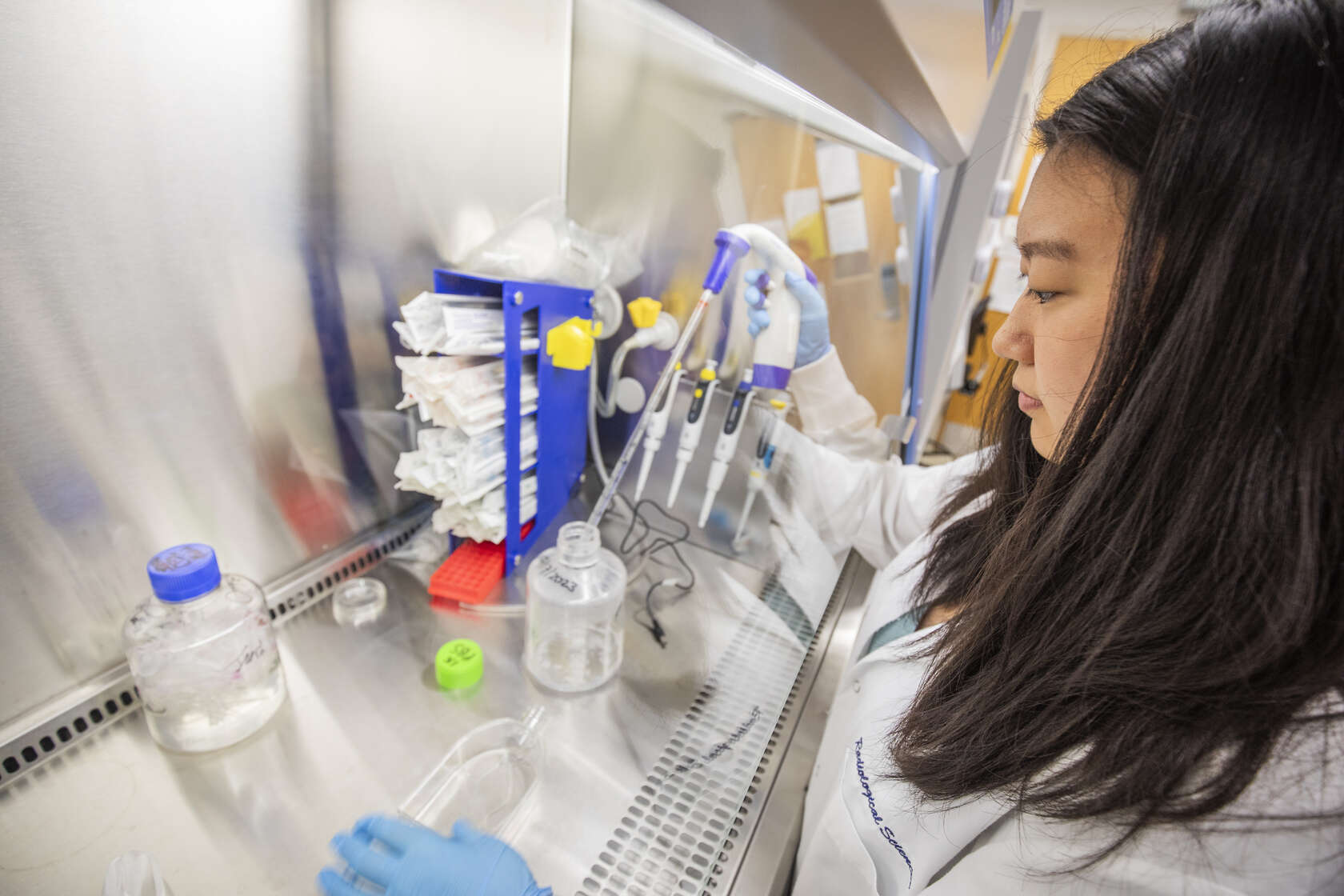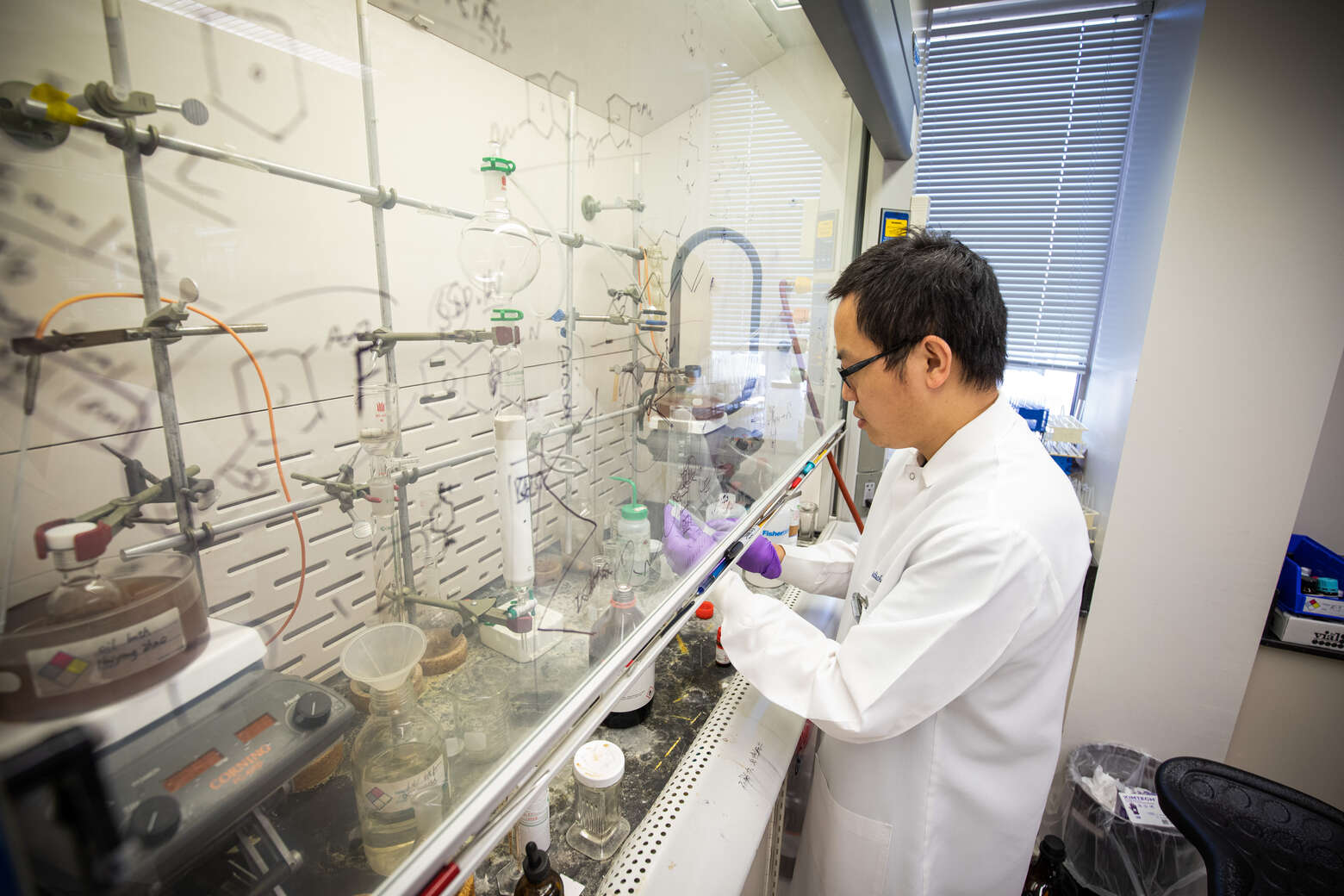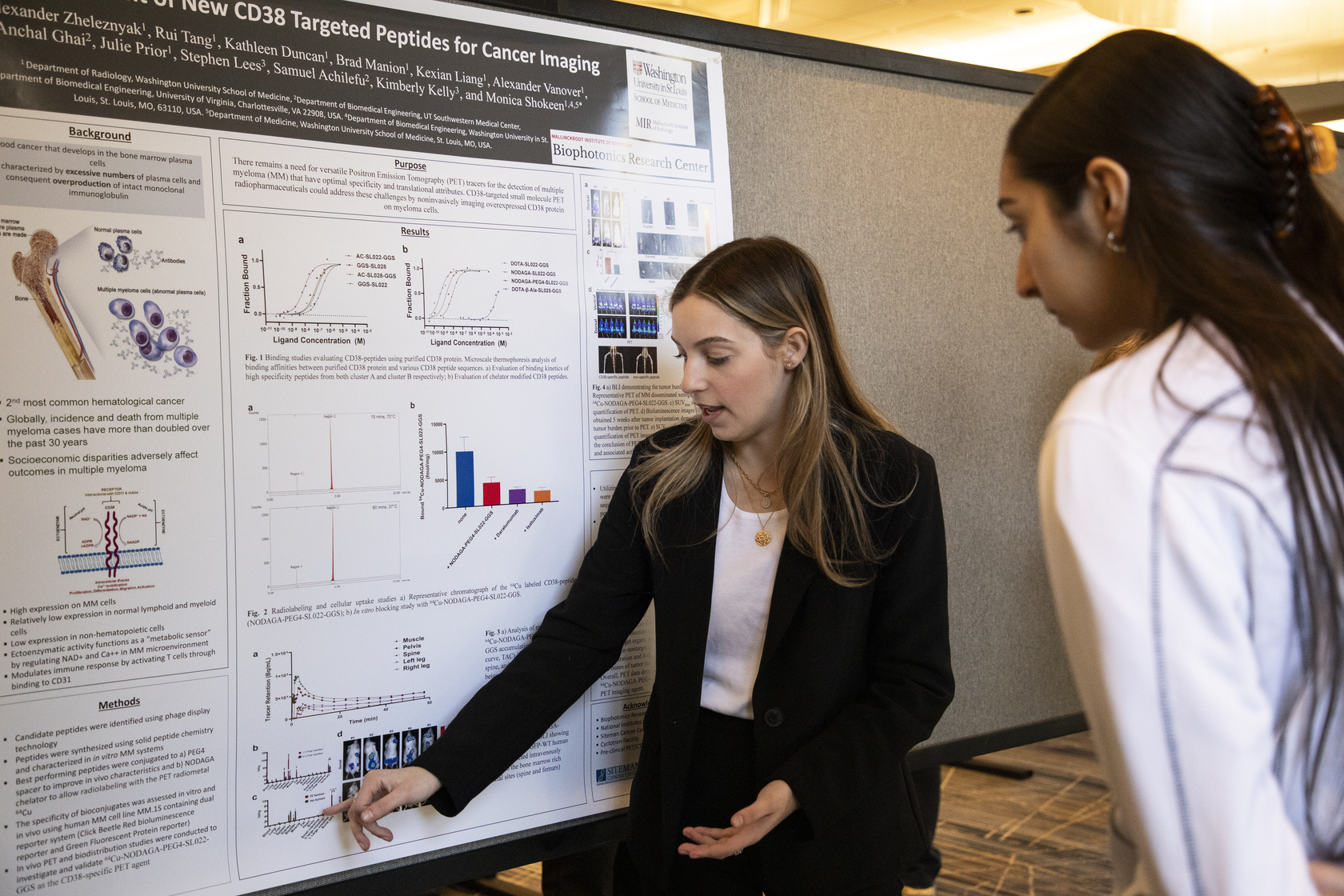The #RadWomen Leaders of MIR
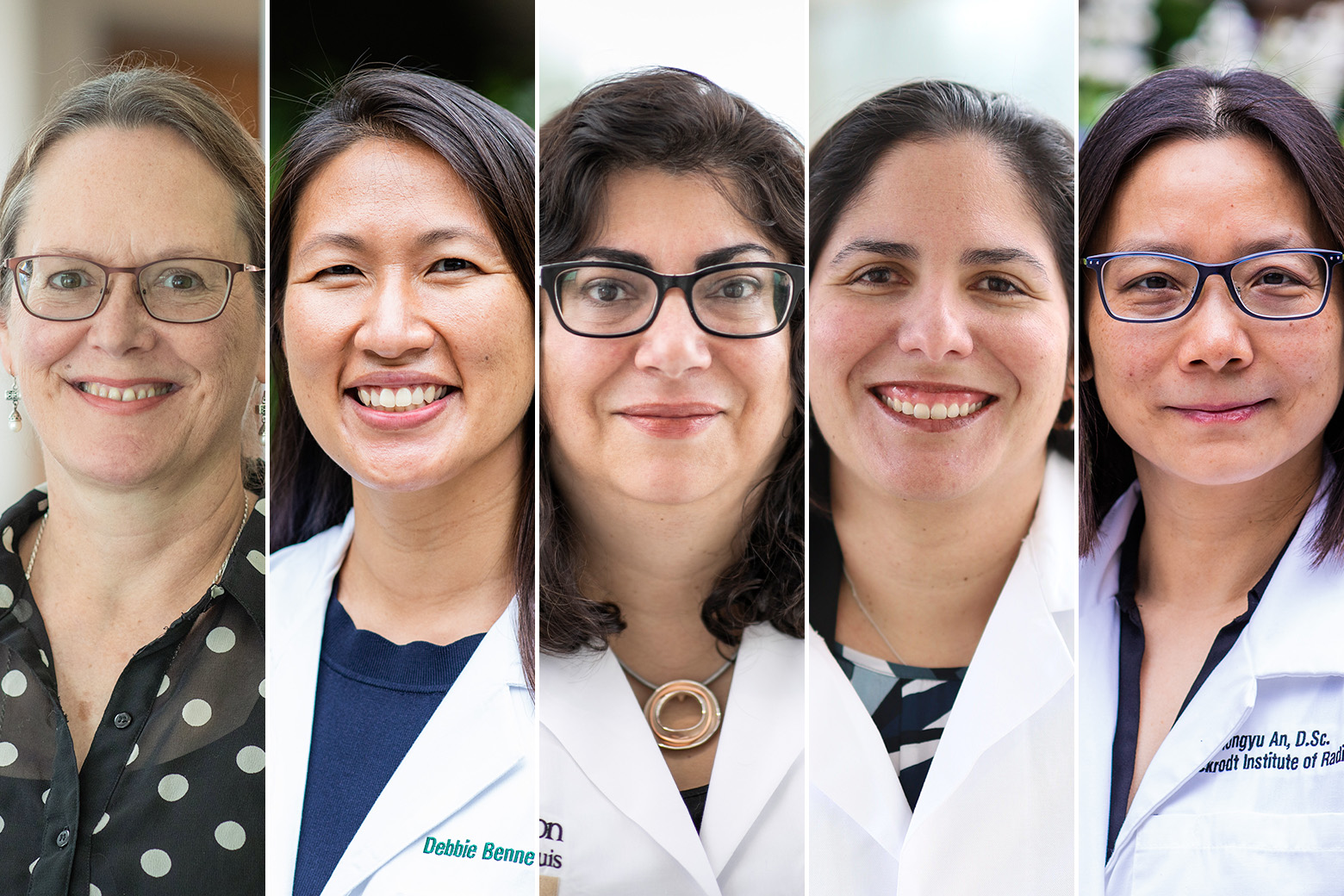
Women are a driving force in imaging science and have been a source of medical innovation and excellence at Mallinckrodt Institute of Radiology (MIR). There are several women in leadership at MIR who have broken down professional barriers, made impactful scientific progress and paved the way for other women in the field. We spoke with five faculty members about what being a woman in leadership means to them and why the advancement of women is important to the radiology community.
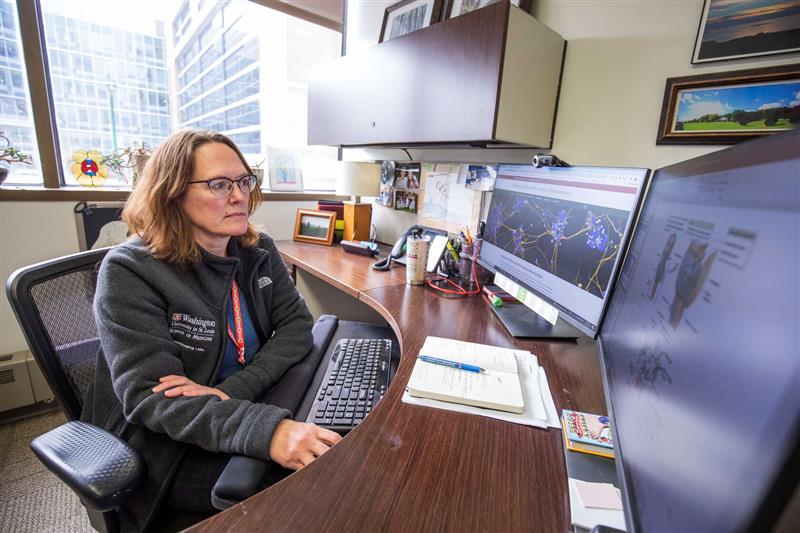
Tamara Hershey, PhD
Tamara Hershey, PhD, is the James S. McDonnell Professor of Cognitive Neuroscience and serves as director of the Neuroimaging Labs Research Center and the McDonnell Center for Systems Neuroscience. Named chief in 2017, she now directs the lab where her career began.
What does being a woman in leadership mean to you?
Historically, the institutional barriers for women seeking leadership positions in research and medicine have been very high. I think those overt barriers are no longer as challenging, and I am happy to see many women rise to leadership positions at Washington University over the past 25 years. I am also grateful that I now get to interact with so many talented female leaders and that many promising junior faculty women are developing their own leadership skills.
Why is the advancement of women important to the radiology community? What can be done to facilitate that advancement?
We need to have a diversity of perspectives and leadership styles to best represent the diversity of the whole radiology community, particularly at the trainee level. In addition, research shows that diverse teams develop more creative and effective solutions than homogeneous teams. I think that institutions and departments need to think carefully about the messages they are sending to junior faculty and trainees about how much they value diversity and why. They also need to follow the words with positive action that encourages women to see themselves as belonging to the community and as becoming leaders.
What advice would you give to women in the imaging sciences?
I would encourage women to find a broad set of mentors to support them in their career development. I would make sure they have more senior women as part of this group and they actively develop a peer support network. These resources can be extremely valuable in helping women make the most of their opportunities, work towards their goals and navigate this complex academic medical setting. Most importantly, these colleagues can be inspiring, motivating and supportive through all the ups and downs of a career. The Academic Women’s Network at WUSM can be a great resource for many of these things.
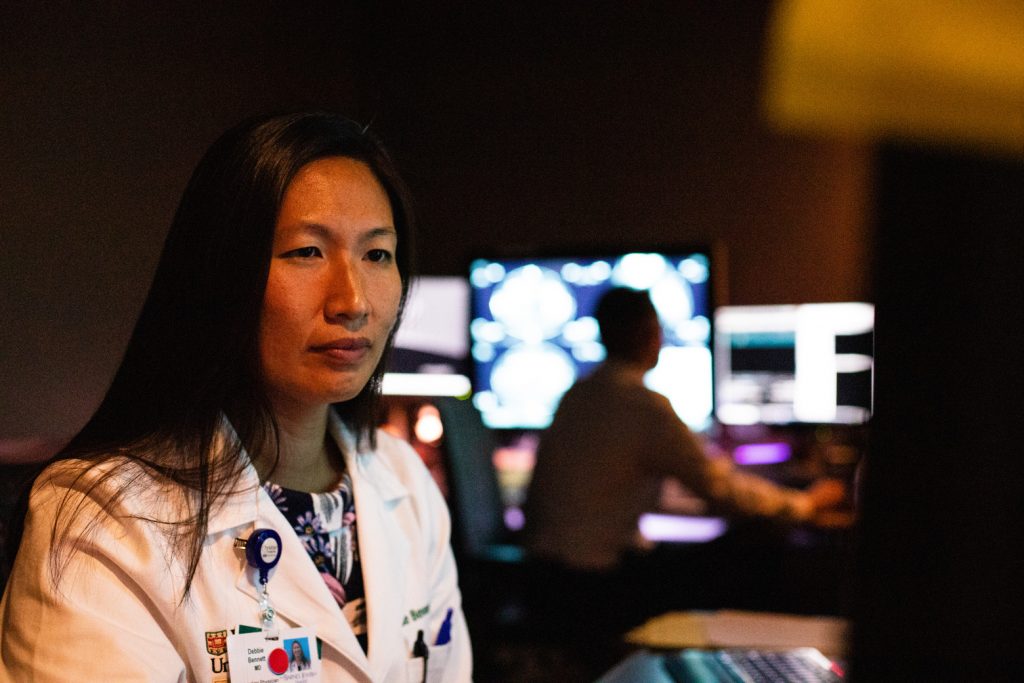
Debbie L. Bennett, MD
Debbie L. Bennett, MD, is chief of breast imaging and oversees screening and diagnostic mammography services offered through Siteman Cancer Center and Washington University School of Medicine in St. Louis.
What does being a woman in leadership mean to you?
Being a woman in a leadership role means the opportunity to positively impact others — patients, trainees, and colleagues — through both role modeling and policy setting. Having a seat at the table means being able to represent the specific needs and considerations of women when decisions are being made.
Why is the advancement of women important to the radiology community? What can be done to facilitate that advancement?
Representation matters. Seeing women in radiology, particularly in leadership roles, increases the likelihood of recruiting more women into our field. We need women to participate at all levels in our professional community to ensure a bright future for our profession.
What advice would you give to women in the imaging sciences?
I would give fellow women the same advice I would give everyone: don’t be afraid to try, whether that’s in your personal or professional life. Believe in yourself and go for what you want. Enjoy life — it goes by so quickly.
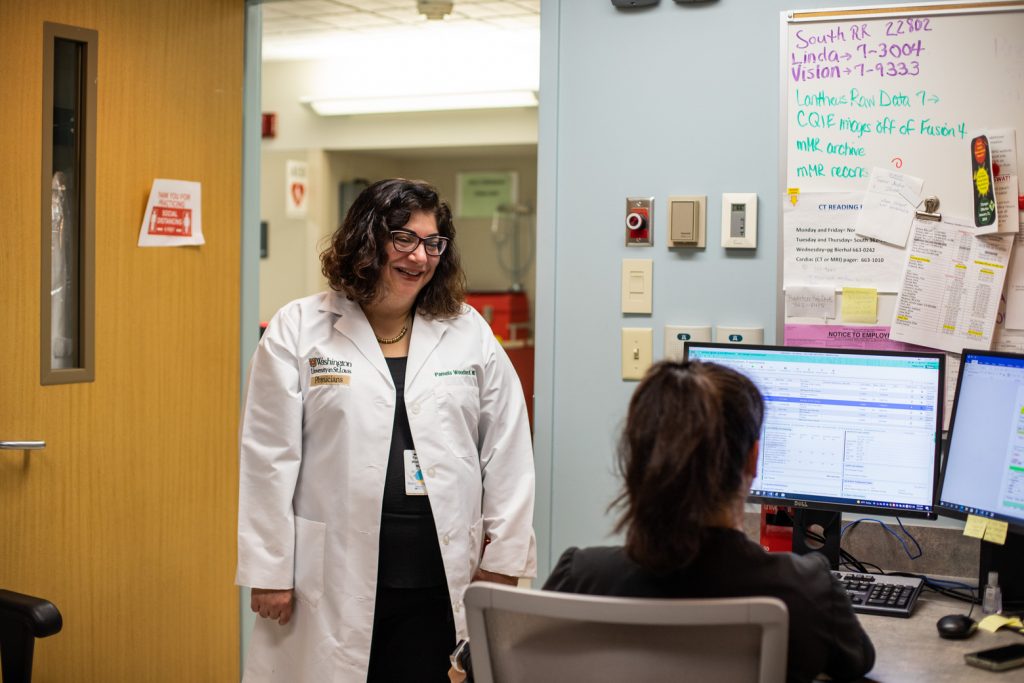
Pamela K. Woodard, MD
Pamela K. Woodard, MD, is the Hugh Monroe Wilson Professor of Radiology, senior vice chair and division director of radiology research facilities, and director of the Center for Clinical Imaging Research. She is the first woman division director in departmental history.
What does being a woman in leadership mean to you?
Being a woman in a leadership position at Mallinckrodt means the opportunity to strategically serve the department, medical school and university to develop opportunities for growth and development of others – women and also men. One thing I am especially proud of is our NIH T32 clinician-scientist program, Training Opportunities in Translational Imaging Education and Research (TOP-TIER). The T32 NIH program will start its 6th year this July. Most of our research residents now enter the T32 program. Some who were in this program in years 1 and 2 are now MIR faculty and mentors themselves. We continue to make dedicated efforts to recruit women and individuals underrepresented in medicine into this program and others.
Why is the advancement of women important to the radiology community? What can be done to facilitate that advancement?
People like to see others in a community and in leadership that look like themselves. They ask themselves, “Are there people in leadership who might think as I think, or look out for the best interests of people like me?” If we want a diverse community we need diverse leadership. We need to provide leadership training opportunities for a diverse base of individuals if we want a strong diverse group of leaders in the future. Leadership is taught and it is important for all types of individuals to have this opportunity.
What advice would you give to women in the imaging sciences?
Seek a wide variety of mentors, including men and women. These might be formal mentors, but also informal. No one person is going to excel at all skill sets. One person might mentor you on your clinical interpretive skills or review your resident teaching slides, someone else might have in-depth knowledge of the NIH or excellent grant-writing abilities and could read through your grant submission, and a third might be in the leadership of an organization that you want to get more involved in. Don’t be afraid to ask. Mentorship never ends. There will always be individuals willing to mentor you and, in turn, you will always have opportunities to mentor others.
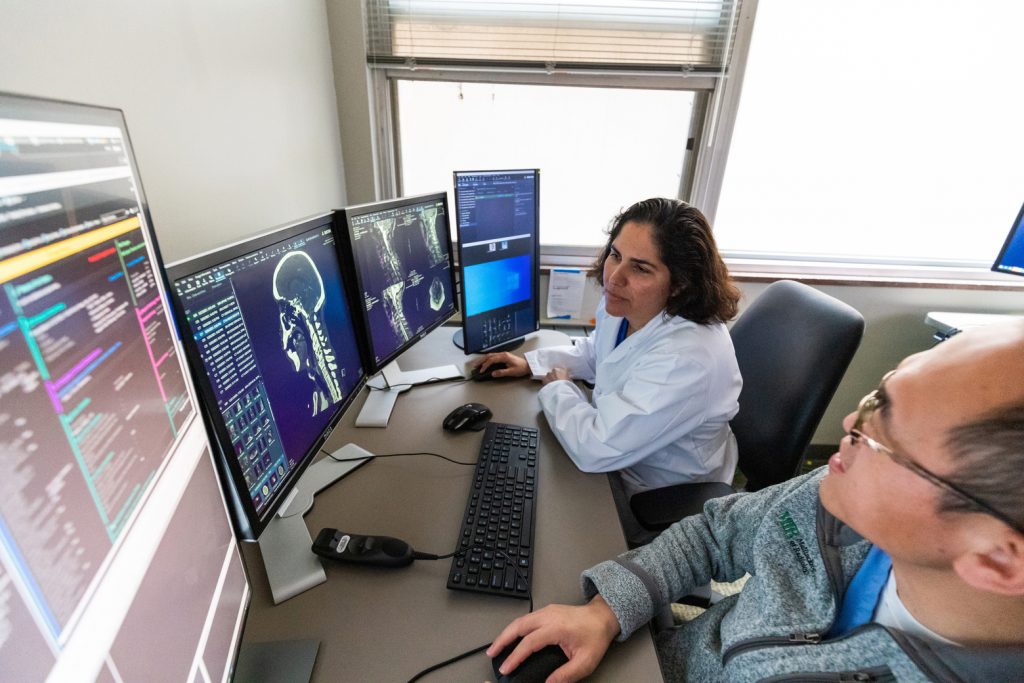
Gloria Guzmán Pérez-Carrillo, MD
Gloria Guzmán Pérez-Carrillo, MD, is an assistant professor of radiology, co-director of the Advanced Neuroimaging Service and the inaugural director of MIR’s Office of Diversity, Equity and Justice.
What does being a woman in leadership mean to you?
Women bring a different perspective and leadership style to the table, which have been proven multiple times in the business world to result in more successful enterprises with a more efficient and satisfied workforce. It is an exciting time for the integration of broader visions into radiology leadership and women are an essential part of that process.
Why is the advancement of women important to the radiology community? What can be done to facilitate that advancement?
Around 50% of our general population are women, and over 50% of our medical students are women. Radiology should reflect these demographics, which is currently not the case. Only about 25% of radiology residents are women and only around 10-15% of leadership positions in radiology are filled by women. Forming a Women in Radiology office with resources and programming to support women both professionally and personally is a great first step to help advance women in this field.
What advice would you give to women in the imaging sciences?
Persevere, believe in yourself and be yourself. Do not imitate what you think are successful patterns of behavior or leadership. Follow your true inner compass, and you will be both more successful and more satisfied with yourself and your work.
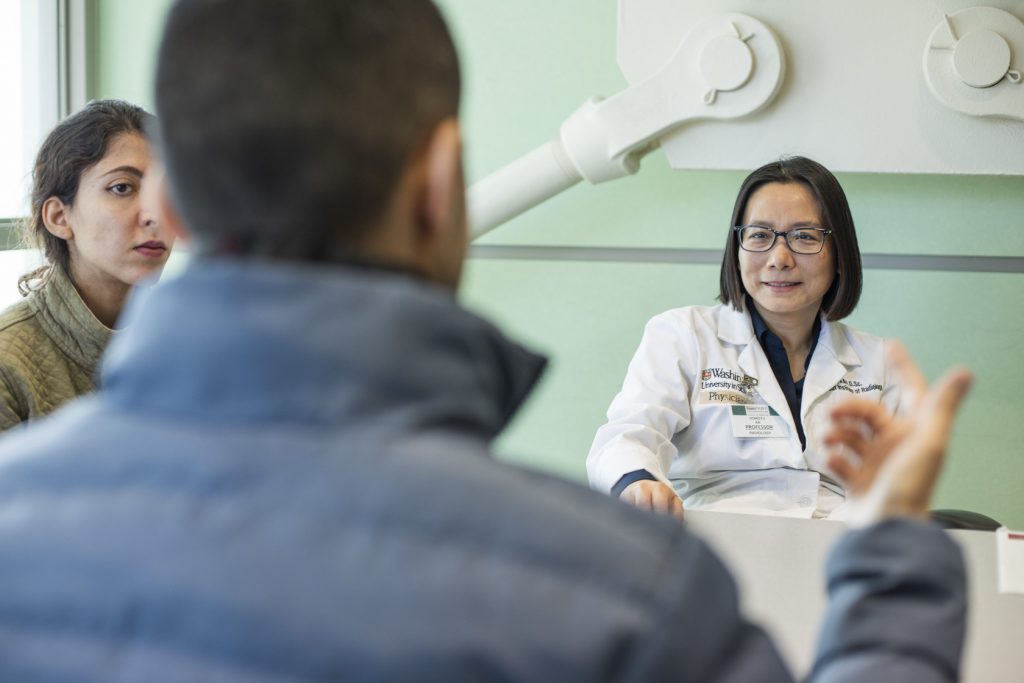
Hongyu An, PhD
Hongyu An, PhD, is a professor of radiology, director of the Biomedical MR Center and the associate director of the Center for Clinical Imaging Research.
What does being a woman in leadership mean to you?
Each of us has multiple roles in our life. Being a woman in leadership needs me to set the proper priority and balance work and family.
Why is the advancement of women important to the radiology community? What can be done to facilitate that advancement?
The advancement of science needs contributions from both women and men. The potential of women in radiology, imaging science, engineering, and physics science has not yet been fully realized. Young girls need to be inspired to study STEM and recognize that they can thrive in these fields. Academic institutions provide opportunities to train and support more women scientists and leaders.
What advice would you give to women in the imaging sciences?
Passion: love what you do. Perseverance: do not give up despite challenges. Learning: be a lifetime learner and embrace new things.

